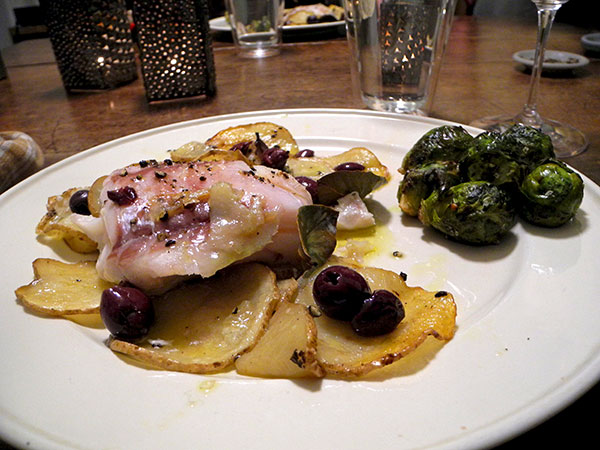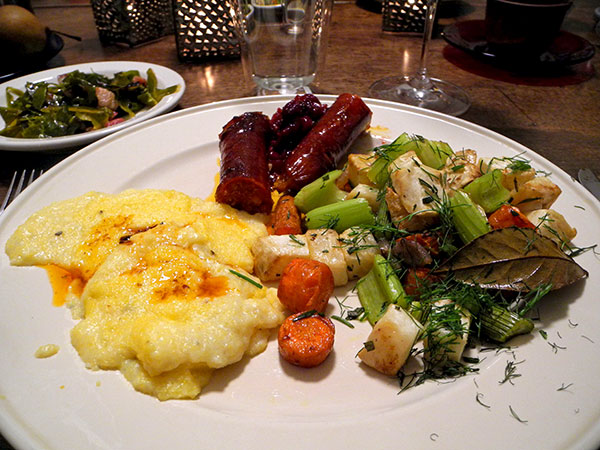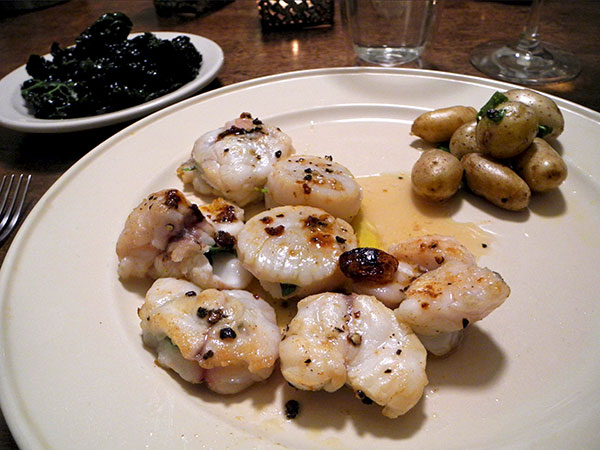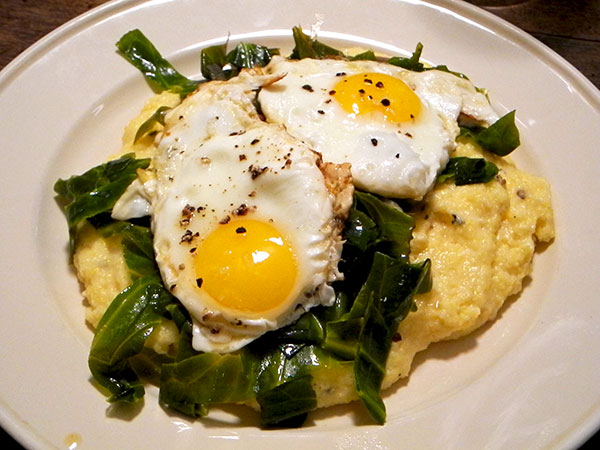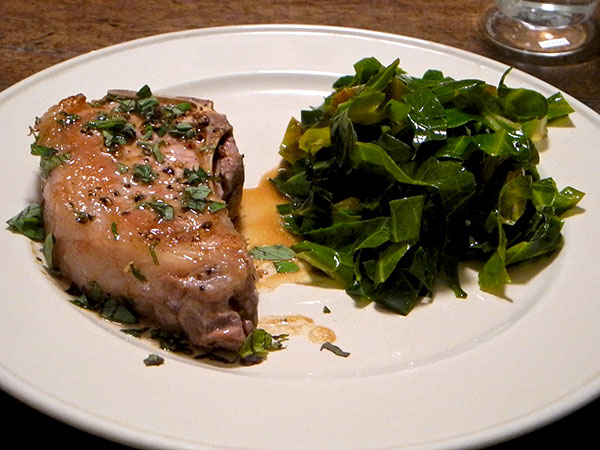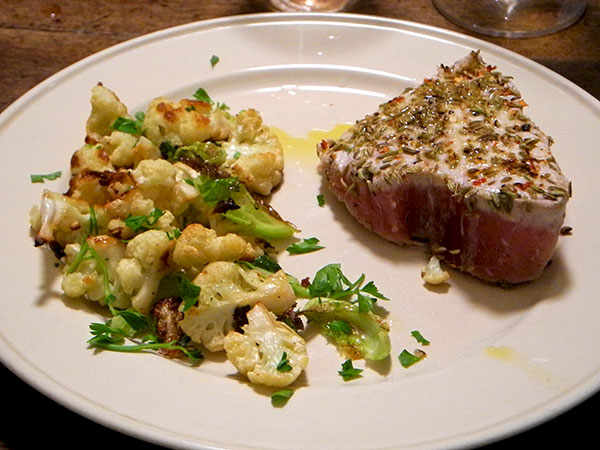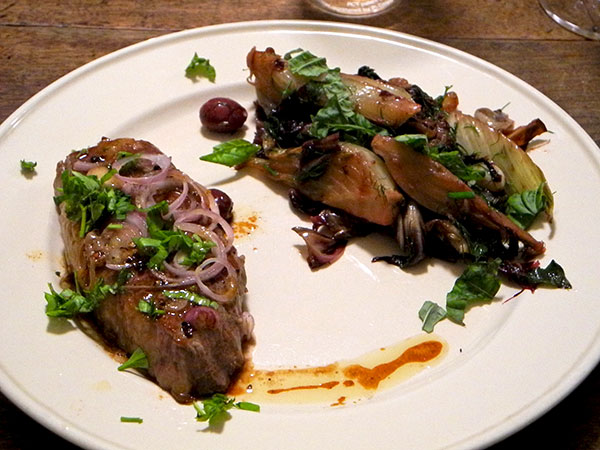
We didn’t have turkey.
On thursday, Thanksgiving, we were at home, just two of us, having somehow forgotten to arrange the small dinner party we would normally have enjoyed on that most social (and refreshingly secular) of holidays. We had squab, but before the squab, a treat which I have to call even more special; we shared a first course of oysters from Walrus and Carpenters, an oyster farm on the north shore of beautiful Ninigret Pond, which is almost at the very bottom of Rhode Island’s South County, one of my favorite places.
We opened five dozen last New Year’s Eve, when I didn’t have to do much in the way of preparation for the light meal which followed. This week I decided that the two dozen (actually 25) would represent the better part of valor if I was going to turn return to the kitchen to prepare a more ambitious meal afterwards. Whatever reason, I think the oysters were even more delicious this time than they had been last December, and they were superb then.
We had picked them up from Jules Opton-Himmel, the young ecologist who created and farms the beds, the night before, and they had been harvested the day before that. The drop off site was the roof of his mother’s loft building on Lower Broadway, where we shared beer and a few oysters with Jules, Joanna, mom, and other customers who had come out in the rain to collect a share of the November harvest.
We plan to order more in December, if possible, on each of the next Manhattan dates, December 12, 23, and 31, and we highly recommend that any local oyster fans who are listening do the same. They also show dates for pick-ups at Brooklyn Kitchen on their site.
The bivalves were followed by roast squab from South Carolina dressed with their own sauce, cranberry chutney, sweet potato oven fries, and winter radish greens braised with a bit of garlic. Dessert was mince pie with goats milk vanilla ice cream on the side. As always, everything but the oysters themselves, and the birds, came from local farmers selling in the Greenmarket in Union Square.
- oysters from Walrus and Carpenters Oysters, served raw on the half shell over ice, unaccompanied
- the wine was an American sparkling, Gruet Brut, from New Mexico
- the plateau is a heavy, ca. 1882, Gildea & Walker ironstone platter, displaying an Aesthetic Movement pattern, “Melbourne”
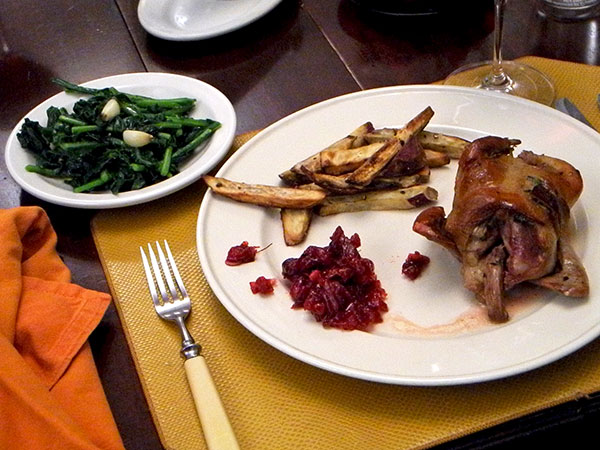
- squab from King Cal Squabs from California, via Eataly, the skin over the breast and legs loosened, and a mixture of butter, shallots from John D. Madura Farm, chopped thyme from Stokes Farm, lemon zest, salt, and pepper slipped between it and the meat, sprigs of thyme inserted in the cavity, the birds browned, then roasted in a hot oven for about 15 minutes, finished with a bit of pan juices reduced with Madeira
- Asian sweet potatoes from Bodhitree Farm, cut as for fries, tossed with olive oil, salt, and pepper, scattered on a ceramic pan, then roasted for about 20 minutes
- cranberries from Breezy Hill Orchard, slowly cooked for about ten minutes along with sautéed shallots from John D. Madura Farm, sugar, cider vinegar from Race Farm, minced garlic from Berried Treasures, chopped candied ginger, salt, and pepper
- winter radish greens from Bodhitree Farm, braised with garlic which had been allowed to sweat with garlic from Berried Treasures
- the wine was a French red, Givry, Dom. Chofflet-Valdenaire 2012
